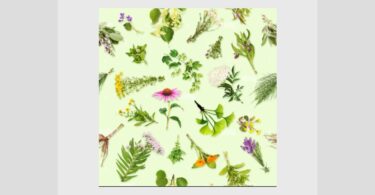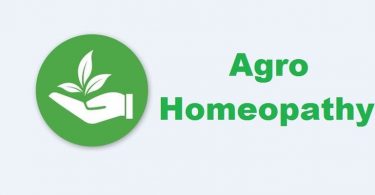Radko Tichavsky is now offering a one semester virtual course in Agrohomeopathy (in English). You can learn how to define and analyze holons and how to repertorize the specific homeopathic treatment beyond just disease or pest names. You can find out more here: www.icomenius.edu.mx
NEW BOOK:
Organon de la Holohomeopatía
Six years in the making, it is the latest book by Radko Tichavsky, researcher on the application of homeopathy in agriculture. This Spanish language book covers homeopathic interventions in agriculture from the holistic view, allowing greater certainty in repertorizations. It addresses a novel concept of metabolic similarity, not only among plants, but also among different species of the animal and plant kingdom. It studies the formation and dynamics of attractors, areas of greater vitality within the holons and coexistence units of different living organisms. Holohomeopathy is a fascinating contribution to the application of homeopathy to plants. It allows one to discover a universe of surprising relations in vital dynamism. It puts into the hands of the agricultural producer a valuable tool for the successful handling of pests and diseases in crops of any size. For ordering or information: [email protected]
Dear Mr. Tichavsky,
My apple tree (South of UK) has dried curled leaves on one side (prevailing South wind side) and a large number of apples with scabs. I put out a pheromone trap which doesn’t seem to have helped. I have a good sized comfrey plant on one side and on the other a Bay tree.
There is a large Cypress about a metre behind it. Could you suggest what might be causing the problem and how to remedy it please. It gets worse every year. Last year we lost all the apples early in a strong wind (we live near the sea), but prior to that had very good crops indeed.
My post code is BH64BP. I’m in the South of England, and it was very wet and cool in June. July has been 20-28 C and dry. We live close to the sea, so afternoon salty sea breezes, sometimes stormy winds which bring down the unripe apples. The pheremone trap is for apple maggots, which may be slightly wrong. The leaves are dry and the bugs make sticky scab marks on the apple and burrow inside, making the apples not useable.
with best wishes,
Marianne Thatcher
Radko TIchavsky:
Dear Mariane,
The vital changes in your apple tree are due to more than one factor. The Rhagoletis pomonella is an obligatory pest in apple trees, but has a greater impact on the fruit if the tree is weakened in its vitality, for example due to accumulations of salinity on the plant (causing the drying of leaves), or because of decrease in organic material in the soil. As for Rhagoletis pomonella, you can apply Ruta graveolons 6 CH alternated with Boswelia sacra resin 6 CH with sap of Opuncia ficus indica or sap of Aloe vera as coadyuvant.
For revitalization of the tree you can inoculate in the soil Glomus etunicatum or Glomus mosseae, two mycorrhizal fungi that increase the resistance of the apple trees to diseases and decrease the saline stress in the trees. You can buy the spores on the internet. After inoculation of the fungus, apply Phosphorus 30 CH to increase the possibility of inoculation and you can irrigate the soil around the tree once a week with a liter of mineral water (with CO2 bubbles). Carbo vegetabilis at potency 12 CH can also be useful for the proposal of a successful inoculation of the fungus. It is important to increase the production of organic material in the soil around the tree as the humic and fulvic acids contained in soil rich in organic materia block the high levels of Na and Cl. Additionally, you can apply Natrum muriaticum 30 CH which will help to drain the excess salt in the plant.
Dear Mr. Tichavsky,
I’m new to this and trying my hand at taking care of an existing garden (quite large) which I just inherited. I believe I have an infestation of aphids. They seem to be eating a lot of flowering plants, shrubs and some of the leaves on my veggies. Aphids seem to be the common pest to all, but it could also be ants, as there are a lot of those. I’d love to know what to ‘feed’ the soil so this is stopped.
I’m in Canada and the Postal Code is L3M 5S5. It typically doesn’t rain much but we had a lot of rain in the spring and for the last month it’s been really hot (30’s C) with higher humidity and very little rain. So much so that I’ve had to water both my front and rear lawns over the past few days and my veggie garden was bone dry. Heat typically disappears around the beginning of August and then milder temps (25 C or so) happen for the month of August. So summer months (from June to Sept)…range from 25 to 35 or higher, with little rain. Winter temps are also mild with little snow.
Much appreciated,
Terri Otway, HOM, R.H.N.
Radko Tichavsky:
Dear Terry,
Aphids and ants live in close association and aphids emit a kind of honey (exudate) that is sweet and attracts ants, and in return ants protect aphids from natural enemies. You can apply Coccinella septempunctata 12 CH on the plants with the affection of the aphids, and once this diminishes in quantity and activity, the ants will diminish their presence also. Additionally, you can inoculate Aphidus colemanii (you can buy some eggs in a paper, that hangs in an infected area with aphids and is moistened until they begin to hatch the specimens of the adult insect of Aphidus colemanii). They are a very small insect, barely visible with a human eye, and they are parasitoids of aphids, the oviposites and larvae, eating the aphids from within, then leaving its body in the form of a new adult that perpetuates the cycle. Another way to control aphids is to make a homeopathic preparation from a soil of your own garden. This contains a lot of entomopathogenic fungi. Simply collect a representative sample of your soil, dissolve it in the water and take it to the 4 CH potency making the whole process of dynamization in the mineral water with bubbles of (CO 2) and disperse this preparation, spraying on the infected areas to contact the bodies of the aphids. The CO2 accelerates the multiplication of the fungi in the bionosode and these infect and eliminate the aphids. It is important not to apply any fertilizer of animal origin to your plants (such as cow manure for example) because it contains semiochemicals that powerfully attract insects which are sucking and chopping leaves. You can apply Carbo vegetabilis to potency 6 CH to adjust the N:C ratio, if nitrogen levels are too high in your plants. I hope these tips will help you to take the first steps in holohomeopathy.
Dear Mr. Tichavsky,
My allotment has a lot of Mare’s tail (Equisetum arvense). Is there anything I can do to deter it? I’m in Guildford in Surrey UK, postal code GU2 9 XY. Average yearly rainfall is around 700 mm. The temperature range is from around 4c to around 22c, with lows of around -5 c sometimes in winter and highs occasionally of 30c in summer. Soil is a light loam.
Many thanks
Helen Holt
Radko Tichavsky:
Dear Helen,
All the plants that grow in a native way in your soil are bioindicators of some kind of imbalances that are solved precisely through the same bioindicator organisms. In the case of Equisetum arvenseindicates poorly drained soils with accumulation of moisture, the presence of heavy metals indicates soils with poor structure. Equisetum arvense is a silica hyperaccumulator, ab element that plays an important role in its metabolism. Because this plant extends its rhizomes several meters below the ground, it can survive prolonged periods of drought and its elimination can be difficult, but not impossible. Collect rhizome and aerial parts of the plants of Equisetum arvense, and burn them on a steel plate, and once the ashes are ready, then prepare them homeopathically to the potency 6 CH and apply by aspersion in the area, alternated with Sulphur 6 CH. A nosode application of ash from the plant has to be applied one week and Sulphur 6 CH in the other for several months. This will desvitalizate the Equisetum arvense.
At the same time, you should get seeds of clover (Trifolium pratense or/and Trifolium repens) and Alfalfa (Medicago sativa) and Ray grass (Lolium hybridum) in equal proportions using 15 kg of seed per hectare of land. Once established the cultivation of these three plants will effectively eliminate the Equisetum arvense and establish beneficial fungi and bacteria for the soil to be revitalized.
Greetings Mr. Tichavsky,
I live in Pennsauken, New Jersey (Eastern U.S.) which generally has moderate weather, except this summer we’ve had quite a few days that reached the 90F mark. There were dry spells followed by torrential rains. The postal code is 08110. I planted Bush Beans and the vines grew up to 9 feet long, but no string beans! I haven’t seen many bees this year and I wondered if the plants weren’t getting pollinated. Or perhaps it’s something nutritional. What are the possibilities and what might I do about it?
Thank you
Theresa
Radko Tichavsky:
Dear Theresa, the way to attract pollinators (not only European bees) is by applying a propolis bionosode to the potency 6 CH prepared from the propolis of the Aphis mellifera. In addition, bees and other pollinators establish their nests around their land if they detect the presence of different honey plants; these should have a high degree of rusticity. Offer flowers attractive to pollinators in terms of nectar and pollen, having a high capacity for self-sowing, and which should bloom throughout the year and are easy to implant. Here is a first list of interesting plants to introduce in your field: Borago officinalis, Brassica napus, Coriandrum sativum, Helianthus annuus, Melilotus officinalis, Sinapsis alba, Phacella tanacetifolia, Trifolium incarnatum, Trifolium pratense, Vicia sativa or Vicia villosa. You can also observe the wild plants growing around you that are visited by pollinators and introduce them into your terrain, increasing the biodiversity of attractive plant species. Once you observe the bees and other pollinators in your field, during periods of drought you must leave dishes distributed with fresh water to drink.
Send your plant questions to [email protected] by the 6th of the month, to have them answered in that month’s issue.







Dear Mr. Radko TIchavsky,
Thank you very much for your advice.
Marianne
Dear Mr. Radko TIchavsky,
I am very sad because each year, for some years now, after spring, when the wild chestnuts make flowers and have beautiful green fresh leaves, very quickly the leaves become spotted with little rusty spots which become bigger and bigger, and in the summer alt the leaves are shriveled, extremely dry and brown, like they normally become at the end of autumn. Most of the trees from the neighborhood, even in some other cities are the same, but not all are affected the same. What do you think? Thanks a lot
Dear Anca, according to the description it could be Cryphonectria parasitica, an Asian parasitic fungus that has invaded chestnut crops in Europe and America. I would need to see photos of the trunk and leaves, and to know the location would also help me to be sure about the taxonomy of the microrganism causing the dissease, so that I could be able to determine the remedies with greater certainty.
To control this fungus we use live bionosode homeopathic remedy from bacterias (in this case from the phyllum Firmicutes made from different biological sources with metabolical similarity to the chestnut and present in the holon as the main remedy. This must be complemented by other homeopathic remedies repertorized in accordance to the specific symptoms according to how they are developing. For example Silicea, Sulphur, Cuprum metallicum, Zincum metallicum, Ganoderma applanatum, Glomus intraradices, are some of the remedies than could be used y homeopathic preparation as collateral remedies.
i want to suscribe this journal please whatsapp me on 8758708373
dr.ketan patel B.H.M.S